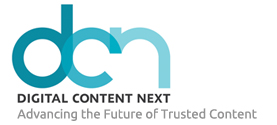Residual effects of the pandemic on consumers are driving many trends within the advertising and media operations industry. For companies with an advertising revenue stream, it is critical to evolve with these trends in order to better serve advertisers and prepare for 2022 and beyond.
Today’s consumers respond to deeper personalization and more nuanced marketing campaigns. So, to cater to these needs and evolving advertiser demands, media brands must adjust their strategies. From adopting performance-based offerings to enabling fully compliant data and integrating automation to streamline workflows for scalability, here are some of the top trends in media operations and advertising that media companies should be taking note of as we look ahead at 2022.
Adapting a performance mindset
While performance metrics have long been a part of the media buy, the way that they are viewed and the depth of their impact on media spends has rapidly shifted over the past two years. In the past, top-of-funnel metrics like brand awareness and views were center stage. Now, the industry is taking a deeper look to correlate media buys with bottom of funnel metrics like pipeline scale and sales growth.
As a result, the pressure is on for advertisers to measure the effectiveness of their ad spending. This, in turn, is driving more publishers and media streaming brands to look at and present their media offerings in a more performance-driven way. This may seem like an unwelcome change. However, those that can connect their offerings to impacts on bottom funnel KPIs are sure to stabilize and scale revenue streams while ensuring higher rates of business renewal.
This shift just starting to take hold of the advertising and media industry. So, we are sure to see a rapid development of methodologies used by publishing and streaming media companies to connect their media buys to key performance metrics. One such strategy that has begun to emerge is the integration of first-party purchase intent data into media buy targeting.
Leveraging automation to manage scale
Advertising and media operations are becoming more complex and nuanced in the post-pandemic modern marketing landscape. As more sophisticated advertising emerges at scale within the media industry, so do the pain points that come along with streamlining processes like order-to-cash (OTC) to fulfill the needs of the industry and prepare for future growth. This is where we are seeing automation come into play.
For many media brands that rely on advertising as a revenue stream, the manual aspects of operational workflows have long been an issue when it comes to scalability. This rings particularly true within their order-to-cash processes. As the demand of the industry forces advertisers to adapt to growth and prepare for scale, many look to automation solutions to help streamline the redundant elements of their workflows. The goal is to optimize today and build for tomorrow. Meaning ensuring scalability, significantly reduce error rates, increasing ROI and, of course, free up internal teams to focus on other growth elements of the business.
This may seem like a daunting task to many publishers and streaming media brands. However, the rewards to be reaped by taking the time to enable automation into their processes are numerous. The shifts we have seen towards more complex and customized advertising won’t slow down anytime soon. In fact, they will become even more intricate and nuanced over time.
Automation solutions not only allow media brands to optimize for current business, but they allow organizations to be ready for growth. An agile solution will accommodate whatever the future of advertising and media operations has in store for the publishing and streaming industries.
Adapting data strategies to meet market demand
Constantly evolving data compliance regulations coupled with the privacy changes brought forth by Google and Apple are changing the way data is viewed and leveraged. These changes are especially prevalent within the publishing and streaming industries where leveraging customer data as a selling point is the standard.
To adapt, many marketing teams are leveraging customer data platforms (CDPs) to streamline their data collection and management across all of their data sources. Publishing and streaming companies need the ability to provide their advertising clients connectivity to data without oversharing or putting privacy at risk.
Some larger walled gardens have developed solutions for this via “CDP Adjacent” systems. However, we are still in the early days of developing an overarching solution for the wider publishing and streaming industries. The imminent demise of the cookie is a driving force towards building solutions. The development of data connectivity systems and similar technologies will allow companies to connect and match data sets in a controlled and privacy-compliant way.
The bottom line
The ever-evolving demands of the modern consumer market are a driving force for trends we are seeing across the advertising and media operations landscape. While these trends are not new concepts within the publishing and media streaming communities, the pace at which they accelerated certainly is.
It is imperative that brands investing in advertising as a revenue stream are not only watching these trends but reacting to them. Working to optimize their current processes, while building agile foundations to prepare for the future. Pivoting to a more performance-based models, integrating automations to streamline processes and developing more robust and data privacy compliant technologies will do just that.











